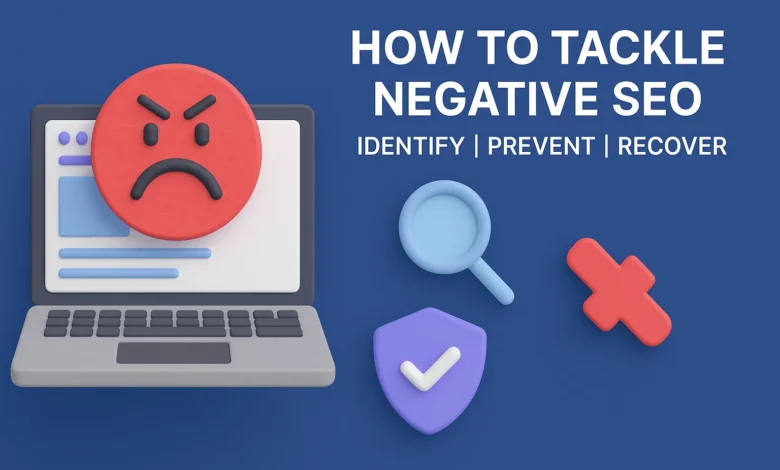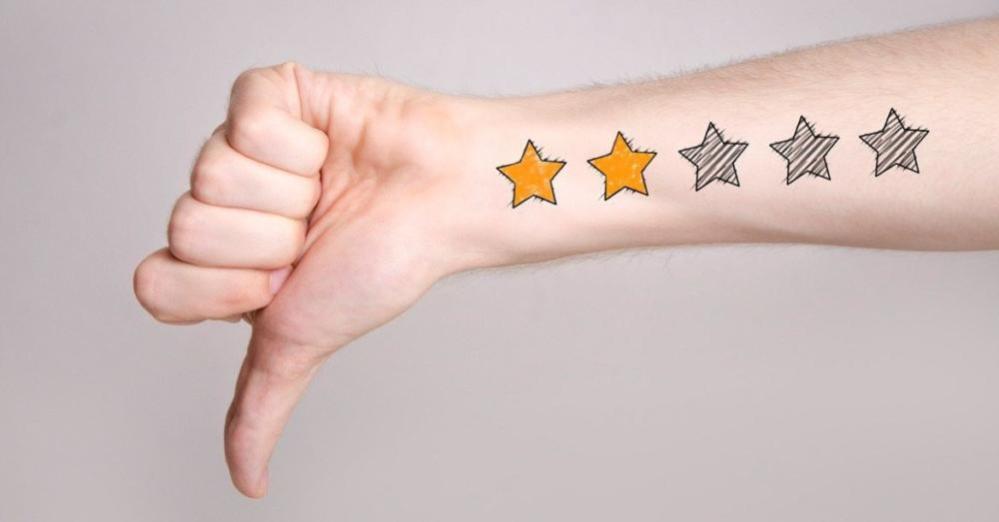
Negative SEO is when someone tries to harm your website’s rankings on search engines on purpose. Often, competitors do this to steal your traffic and rank higher than you.
The goal is to make search engines think your website uses spammy or bad SEO tactics. This can lead to penalties, lower rankings, and a loss of trust from visitors.
In 2024 alone, over 422,000 websites were affected by negative SEO attacks. This shows that negative SEO is more common than many website owners realize.
Common Negative SEO Tactics
Attackers use many strategies to damage a website.
Below are the most common types:
1. Spammy Backlinks
Spammy backlinks are low-quality links that point to your website. These links often come from many unrelated websites and appear suddenly.
Spammy backlinks can lead to penalties or make search engines ignore your site.
Common methods include:
- Link farms: Networks of low-quality sites linking to each other. They are cheap but can leave a spammy footprint.
- Automated tools: Programs that post links automatically on forums, blogs, or directories.
2. Fake Reviews
Attackers may leave fake negative reviews on platforms like Google Reviews, Yelp, or Tripadvisor.

Fake reviews are especially harmful for local businesses that rely on reviews to attract customers.
Signs of fake reviews:
- Poor grammar or spelling
- Repeated phrases or vague complaints
- Sudden spikes of negative reviews
3. Content Scraping
Content scraping happens when someone copies your content and republishes it elsewhere. This can create duplicate content that might outrank your site. AI tools make it easier to slightly modify stolen content which makes detection harder.
4. Click Fraud
Click fraud is when someone repeatedly clicks your website link using bots.
This can:
- Make their site look more valuable
- Harm your rankings by creating high bounce rates
5. Site Hacking
Hacking can cause serious damage. Site hacks are sometimes hard to detect until traffic drops or Google flags your site.

Attackers can:
- Add spammy links to harmful sites
- Inject hidden spammy text
- Add noindex tags to important pages
- Redirect visitors to other websites
- Slow down your site or break its structure
- Spam comment sections with irrelevant links
6. Negative Brand Mentions
Attackers can spread false negative information about your brand online. This can affect your trustworthiness, authority, and SEO performance.
Can Negative SEO Happen by Accident?
Yes. Sometimes website owners unintentionally harm their SEO.
Even small mistakes can lead to low-quality backlinks and penalties. Regular monitoring and domain hygiene are essential to avoid accidental negative SEO.
Examples:
- Hiring cheap backlink services that provide spammy links
- Letting an old domain expire, which is then scraped and redirected to your new domain
How to Detect Negative SEO?
Early detection is crucial. Some signs include:
- Sudden drop in rankings or traffic
- Increase in spammy backlinks
- Duplicate content warnings
- Negative reviews or mentions
Tools to Detect Negative SEO
- Google Search Console (GSC): Check backlinks, anchor text, security issues, and ranking drops
- Semrush Backlink Audit: Analyze backlink toxicity, create disavow lists, and monitor brand mentions
- Ahrefs: Track new and lost backlinks, identify suspicious links
- Backlink Monitor: Get alerts for toxic links and track keyword rankings
- Majestic: Evaluate Trust Flow and Citation Flow of backlinks
How to Prevent Negative SEO?
While you cannot stop attacks completely, you can reduce the risk with these strategies:
Harden Technical SEO
- Keep your CMS, plugins, and themes updated
- Use HTTPS for secure connections
- Add security headers to prevent malicious activity
- Use CAPTCHA, rate limiting, and honeypot traps to stop bots
Monitor Your Backlinks
- Export backlink reports monthly
- Watch for sudden spikes in links
- Disavow spammy or low-quality links through Google disavow tool
Track Brand and Site Mentions
- Use Google Alerts to track mentions of your brand, product, or domain
- Monitor review platforms, social media, and forums for false claims
Protect Your Content
- Use rel=canonical tags to signal original content
- File DMCA takedown requests if your content is stolen
- Watermark important images or use brand-specific elements
Maintain Domain Hygiene
- Renew domains early or use auto-renew
- Audit redirects to ensure they point to correct pages
- Check for impersonation or “for sale” listings
How to Recover from Negative SEO?
If your site is attacked, act quickly. Document everything, report abuse, and involve legal counsel if necessary.
Step 1. Assess the Damage
- Check rankings and traffic in GSC
- Look for deindexed pages and request reindexing
- Search for duplicate content to see if your content is scraped
Step 2. Clean Up the Attack
- Use Google’s Disavow Tool for spammy backlinks
- Reclaim deindexed pages and remove noindex tags
- Remove or rewrite scraped content if it outranks yours
- Harden site forms and open entry points
- Check and restore .htaccess and robots.txt files
- Set up regular backups
Step 3. Respond to Reputation Damage
- Flag fake reviews on Google and other platforms
- Respond professionally to false claims
- File DMCA takedowns for impersonation or stolen content
Step 4. Escalate if Needed
- Seek professional help if attacks include:
- Brand impersonation or phishing
- Hacked pages or malware
- Fake reviews or defamation
- Customer data compromise
Long-Term Protection Against Negative SEO
Being proactive helps you minimize risk, protect your rankings, and maintain your online reputation.

To stay safe:
- Learn technical SEO basics to secure your site
- Integrate monitoring into regular workflows
- Conduct local SEO audits to protect your brand and reviews
- Regularly check backlinks, content, and traffic
Wrap Up
Negative SEO is a real threat that can hurt your traffic, rankings, and reputation. Understanding common attacks, monitoring your website regularly, and taking preventive steps are key to staying safe.
Even if attacks happen, swift action and proper cleanup can restore your site. By maintaining technical security, monitoring backlinks, and protecting your brand, you can reduce risk and stay ahead of negative SEO threats.
Negative SEO FAQs
What is negative SEO?
Negative SEO is when someone tries to harm your website’s search rankings on purpose. Competitors or attackers use tactics to lower your traffic and make your site look spammy.
How common is negative SEO?
Negative SEO is more common than most people think. In 2024, over 422,000 websites were affected by some form of negative SEO.
What are the most common negative SEO attacks?
The most common attacks are spammy backlinks, fake reviews, content scraping, click fraud, site hacking, and negative brand mentions.
Can negative SEO happen by accident?
Yes. Hiring cheap link services, letting a domain expire, or poor website management can accidentally cause negative SEO for your own site.
How can I detect negative SEO on my website?
Watch for sudden drops in traffic or rankings, duplicate content, fake reviews, or spammy backlinks. Tools like Google Search Console, Semrush, and Ahrefs help detect issues.
How can I prevent negative SEO?
Prevent attacks by keeping your site updated, using HTTPS, monitoring backlinks, tracking brand mentions, protecting content, and maintaining domain hygiene.
What should I do if my site is hacked?
Remove spammy links or hidden content, fix noindex tags, check redirects, secure open forms, and restore backups. Use Google Search Console to request reindexing.
How can I recover from fake reviews?
Flag or report fake reviews on platforms like Google or Yelp. Respond professionally to protect your brand reputation.
Do I need professional help for negative SEO?
Some attacks, like hacking, brand impersonation, or phishing, may require a professional agency or legal help. Document everything and report abuse.
How can I stay safe from negative SEO long-term?
Monitor backlinks and traffic regularly, secure your website, conduct SEO audits, protect your brand, and take preventive actions to reduce risk.







